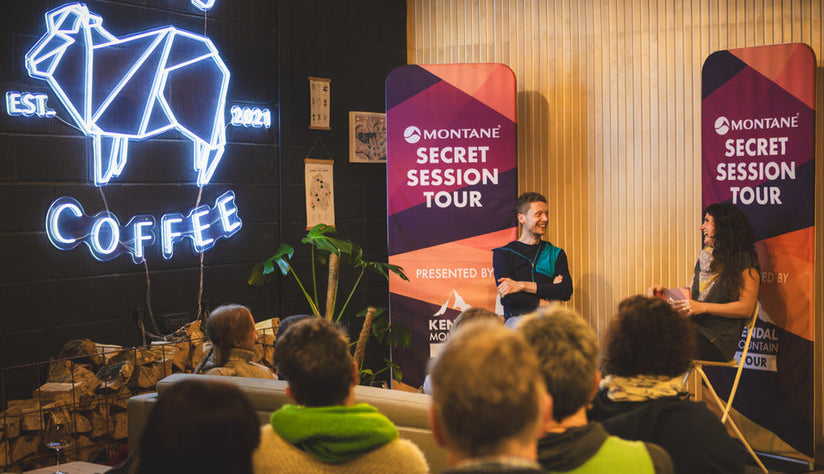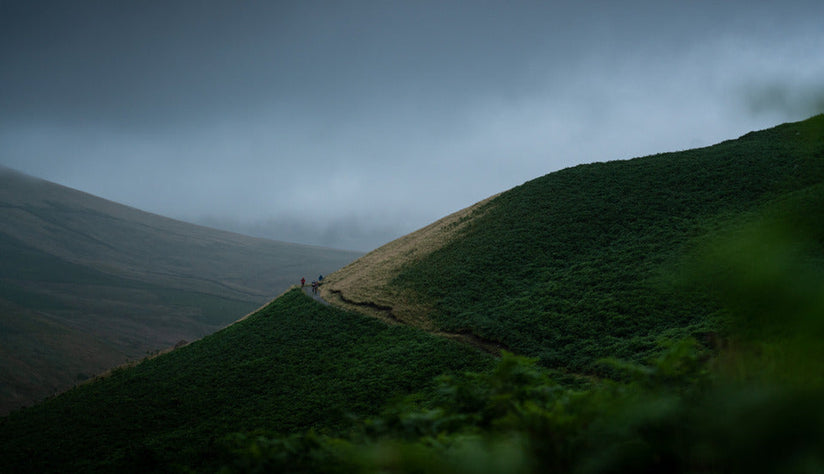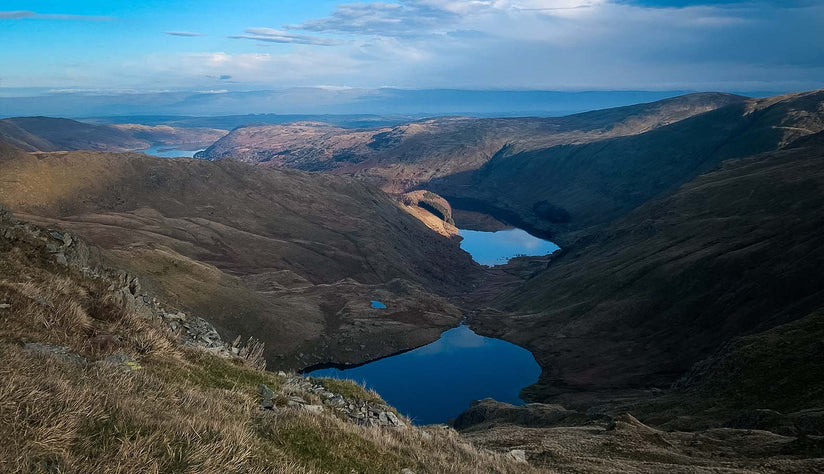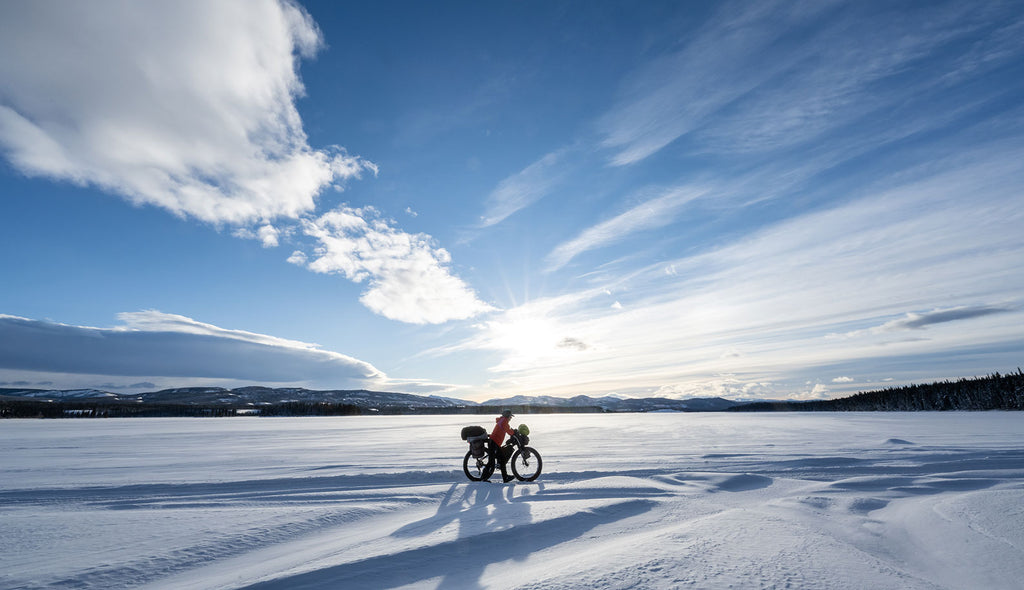Photos: MarkKellyPhotography.ca
It’s no secret that we love a challenging ultra here at Montane. Alongside the Montane Winter Spine Race, the MYAU is another of our hotly anticipated early-season races. What sets this event apart from the other races we sponsor is, not only its far-flung location, but the eye-watering sub-zero temperatures that the racers face en route.
The remote Yukon region offers a real test of both physical and mental endurance. One racer only too familiar with this is local Jessie Gladish. Jessie has braved the Yukon trail an incredible six times to date, four times completing the 430-miler so far and twice the 300-miler.
Who better to understand more about the challenges encountered on the trail? Keep reading to find out more about this inspiring winter ultra and what it takes to complete such a challenge.


Meet Jessie
I’m from Whitehorse in the Yukon (the official starting point of the MYAU), which is way up in northwestern Canada. Growing up in this unique and wild landscape definitely helped to sow the seeds for my endurance racing today and has helped to enable me to have a lot of things on my side when I'm out on the trail! I really love getting into a simple mindset of moving forward consistently, day after day, until it’s over.
I feel extremely privileged to have grown up in an environment that fosters independence and resilience, while at the same time being safe. On our many adventurous family ‘holidays’ (including several canoe trips down the Yukon river that would last up to a week), my parents taught me tons of outdoor skills. Both my mum and dad have such passion for being active outside and are incredibly athletic in their own rights, having taken on several impressive outdoor challenges themselves.
On these trips, I learned how to overcome boredom by making up games, songs or stories, how to keep energy levels up, and ultimately how to feel confident in my abilities if I found myself alone for a while. I am comfortable with being uncomfortable. All of this came before ‘ultramarathon’ was a part of my vocabulary, which I didn’t even know about until much later in life!
Today I work in remote areas in the Yukon doing geology fieldwork and have been doing that since 2011. Being familiar with maps, a compass and a GPS, and being self-sufficient for weeks at a time in small camps really gets your mind tough enough to just deal with whatever happens. It builds a mental and physical toolbox to go forward. I wouldn’t be where I am today with ultra events if I didn’t have this work experience as well. I don’t actually remember a time when going long distances in the wilderness wasn’t a part of my life.
In my twenties I started doing half marathons and marathons in British Columbia, Canada while living there. Trail running was great in the city where I was living, so I started looking at trail marathons instead of road. My first trail marathon was in Moab, Utah. In 2014 I noticed some friends did a marathon in Whitehorse - in February! I had no idea that was a thing. I immediately looked up the race and realized the MYAU had been going for over 10 years and I’d never heard of it. When I saw there was a 430-mile option to Dawson City, I decided I would go for that one. Long story short, I finished it in 12.5 days and was hooked on the trail and long distance in general.
I came back and did the 300 on foot (as a team with another woman), the 430 again on foot and skis, traveled to Alaska for the 2018 ITI 300 miler, and have also done a handful of 100k, 50k, 50 miles, 120 miles, and even went back to Moab to do a 240-mile desert race two years in a row. Then I got a fat bike and completed the 300-mile MYAU in 2022 and the 430 race in 2023.

The appeal of the Yukon Arctic Ultra
I watched the Yukon Quest Dog Sled Race every year in Whitehorse - which is probably one of the main reasons the MYAU sticks with me. I get to see the trail that was a mystery to me as a kid. The place where all the dog mushers went with their beautiful and strong huskies.
When I come back to the Yukon after being away, there’s always this feeling of having space again; what I love the most is knowing there are expansive forests, mountains, lakes and rivers filled with animals who we rarely get to see because they also have so much space to live.
The appeal of the trail is similar. It’s mind-numbingly vast, yet you also go through these unending tree tunnels where no sunlight comes in and it feels like the forest is swallowing everything up. The snow also makes everything quiet. We are noisy with the gear swishing and the crunchy footsteps and our stress and breathing and swears.
I love getting into moments where I am also quiet out there. When you stop, out there, the silence is crushing. I feel everything out there; that’s why I love it and that’s why I keep going back. Hopefully we get some good clear nights for stargazing this year.
The MYAU sees a lot of returning athletes from all over the world, as far as Australia, so I assume the reason must mean it’s because there is something extra that the Yukon has. There are a lot of cool races all over the world so, to keep coming back and spending time and money here, says a lot.

An overview of the race
This race is remote and cold. It’s a single-stage race where people can be days apart by the end. Somehow, enough volunteers agree to spend up to a week in a wall tent or a cabin at the remote checkpoints, which is why this race can happen. Racers can choose to do their distance (marathon, 100, 300, 430 miles) on foot, skis or a fat bike. Someone has even done the marathon with their dog which I think is pretty cool. I’d bring mine but she would die in the cold on night one.
The trail travels on wide rivers, through thick boreal forests, and over a few long lakes. The elevation gain isn’t enough to talk about in numbers but it does add up in frequent rolling hills and several consistent long climbs. There are mountain views but they are far away and sometimes require looking backwards to fully appreciate it, especially on day one and two.
There are checkpoints but they are spread far apart. On foot, I’d say there’s one every 24 hours or so, depending on someone’s pace. Last year I left one checkpoint on my bike at around 4 or 5pm and arrived at the next just over 12 hours later. It’s a long time to be alone compared to most other ultras I’ve done.
There are two very important things to be aware of on the trail: cold and remoteness, closely followed by the darkness I guess. The cold is a very real danger; we quickly lose dexterity in our fingers when they are cold, but we need them to function in order to use our gear, to eat and drink and to put layers on and off. If we can’t do this stuff then hypothermia and frostbite (cold injuries) become likely and, from there, someone will need help to come or to get themselves to a checkpoint, which could be many hours away, or even days, depending on the weather and how fast someone can move.

Remoteness because it means things like a rescue take longer, but also because it can mentally destroy someone. When it’s -40 but you have a house to run into everything is fine. I live in Dawson currently and have gotten very cold walking to the grocery store and back, or going on a dog walk. This is okay because my safe place is warm and waiting right there.
On the trail you are your safe place and your bivy is not set up for you and warmed up to jump into whenever you like. You have to do this all by yourself and decide when and where to sleep, and when to push on, or when to stop and eat and drink. When there is nothing around you except trees, and snow, and darkness, all the problems feel bigger and more threatening, especially when it’s cold. The key is to forget about how far away everything is and just focus on what you need from yourself and how to use the tools you brought. There are other people but who knows where they are or when you might see someone again.
The darkness, well, it’s dark for 14 or so hours a day. A good headlamp, a good spare, and a good supply of batteries will help. Maybe some vitamin D...

A day on the Yukon trail
4:00 am: This is actually when I usually get up from a bivy or a CP. Or 3am. I like to sleep between 11/12-3am.
4:30 am: Stop and reorganize my stuff, packing up a bivy and getting warm leaves things messier than I like, so I usually combine water and a snack in with just tidying up my home (a.k.a my sled/or bike).
5:00 am: I’m usually doing maths over and over again to see how far away the sun rise is in hours. I also drink instant coffee and usually feel really great and energized with a whole day ahead - looking forward to the daylight.
9:00 am: Things usually get colder a couple hours before the sun comes up, so I might be layering up and panicking a bit about how cold I am - maybe some hand warmers will help?
10:00 am: Sunrise and a decent snack once I hit my first spot of sunshine. Usually wondering if a snowmobile is going to go by anytime soon.
1:00 pm: Doing the math again to see how many daylight hours I have left, planning out a pre-dark stop to melt water and have a hot freeze-dried meal. Doing maths again to see what time I’ll maybe hopefully arrive at a checkpoint, or planning on a time and place to stop on the trail.
3.00 pm: Hopefully feeling good and admiring the scenery.
5:00 pm: Stopping to boil water and refill my thermoses, have some hot food. Maybe change layers, put my headlamp on and ‘get ready for nighttime’.
6:00 pm: It’s going to be dark within the hour. Mentally preparing for a long night.
10-12pm: If I’m lucky I have arrived at a Checkpoint by now, if not then I will start looking for somewhere to sleep and rest between 12-3am.

Lessons learned on the trail
I’ve learned to accept help and support from others. I’ve learned to trust myself and that mistakes are a part of it all and to move on from them. I’ve learned that I can cry and have a breakdown while maintaining forward momentum. I’ve learned how much I enjoy teaching others, I didn’t expect that at all if you’d asked me in 2015 where this was going to go. I’ve learned the depths of my determination (and stubbornness..) and how badly I want to finish what I start.
Feeling inspired?
Head to our dedicated MYAU event hub to keep up with all the latest race action. Discover more fascinating Montane Yukon Arctic Ultra insights in our dedicated story behind blog.


















